| So we left Quebec City and headed east along the
southern bank of the St Lawrence. At the tiny village of L'Islet we found
the Quebec Maritime Museum with this collection of ship models from the
region. | 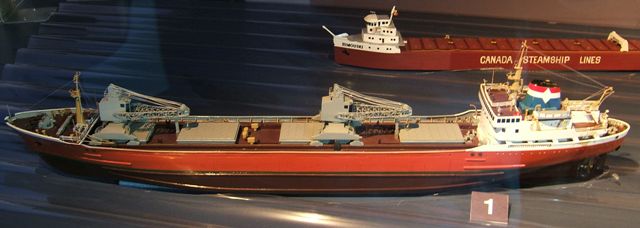 |
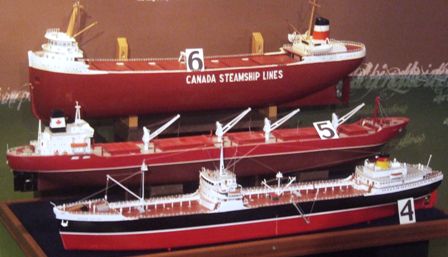 |
These are all typical lake designs being narrow but deep to fit in the
locks. Many have their own unloading gear to enable them to work from minor
ports. |
| The sailing ship models are very well built and full
of intricate detail. This is the Orignal, a 19th century barque. | 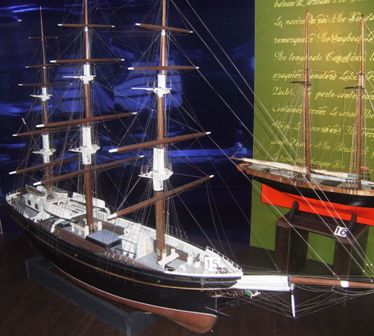 |
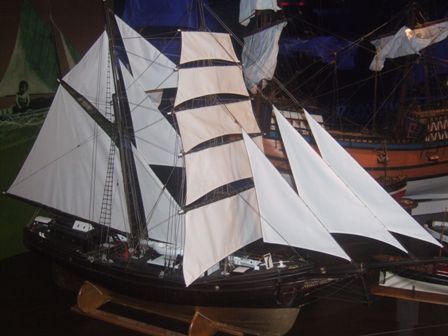 |
The Samuel de Champlain, a 19th century brigantine, was used for both
inter-coastal and international traffic. |
| Captain Edgar Jourdain of Matane (a local man) owned
the Juliette which he used to sail the north shore waters from 1923-7. | 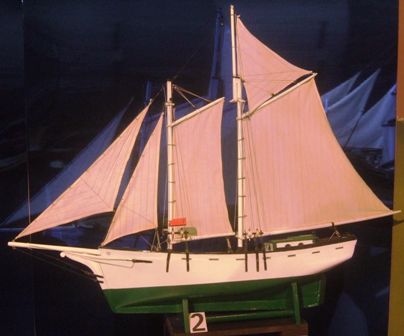 |
 |
This is the North Voyageur, 122ft long and 36ft wide, whose 1050 bhp engine
enabled her to travel at 11 knots. |
| All captains had to be licensed to travel the
treacherous waters. Here is a captain's certificate of competency and the
tools of his trade. | 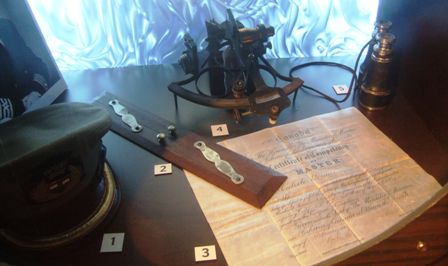 |
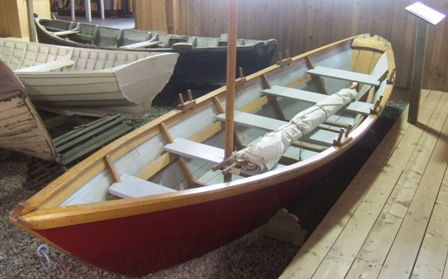 |
There are also some real examples of smaller boats on display, some of which
are still being built here today by a local craftsman. This is a 16ft dory
used to cast bottom lines at the fishing grounds. Its design enabled it to
be stacked for carriage on a larger vessel for transport to the fishing
areas, and has not varied since the 1870s. |
| This was built in 1950 as a lighthouse keeper's boat
but it proved ill-suited to the St Lawrence waters and so had many
alterations and owners in its life. | 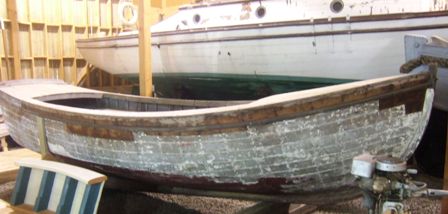 |
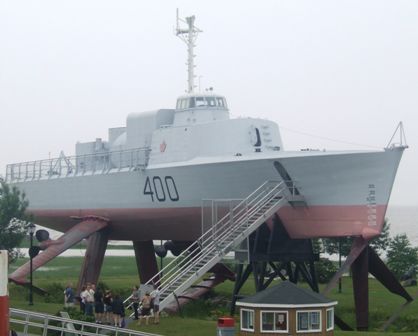 |
Outside we found this rather unique developmental vessel which the Canadian
navy used to test the principles of the jetfoil. It was begun during the
cold war era when they foresaw a need for really fast naval vessels. The
original budget in 1968 was $10M but by the time it was eventually scrapped
in 1971 it had cost over $53M. |
| The idea of the jetfoil is that as the speed increases
it will rise up on the foils reducing the drag and thus be very fast. It was
a little ahead of its time. | 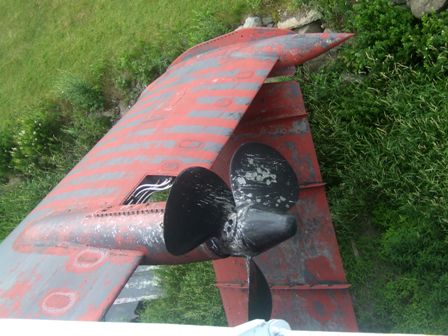 |
 |
Steering was by this foil at the front. It was more like a plane than a
boat. |
| Indeed the bridge looks more like a cockpit on an
aircraft, and in fact they employed navy pilots rather than captains to test
it. | 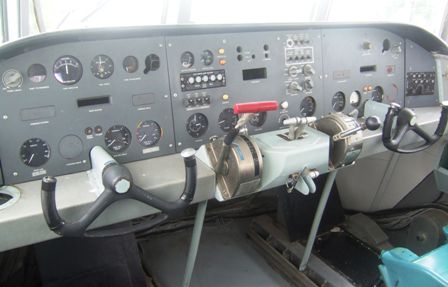 |
 |
The 'flight engineer's' control panel was probably even more complicated. It
was rare that everything worked for long and it was usually towed back to
port. |
| Behind that was the computer! This probably cost as
much as the ship. This was 10 years before I started playing with computers
and even those ran on paper tape. Unfortunately the vessel was stripped when
it was scrapped and the museum is struggling to replace many of its
fittings, as can be seen in these photos. | 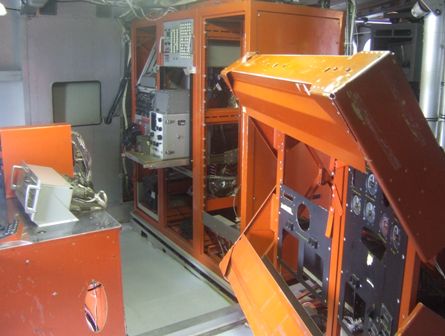 |
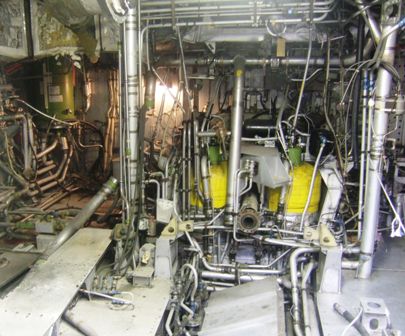 |
The engine room, minus the engine. That was sold to offset the costs of the
project. |
| Ernest Lapointe was a Canadian coastguard icebreaker
before becoming a museum. She was built in 1939 and was in service until
1973. Although used as a troop carrier to Labrador during the war, it spent
its life removing ice on the river between Montreal and Trois Rivieres. She
was built in Quebec and is 52m long and 10.9m wide and weighs in at 1179
tons. |  |
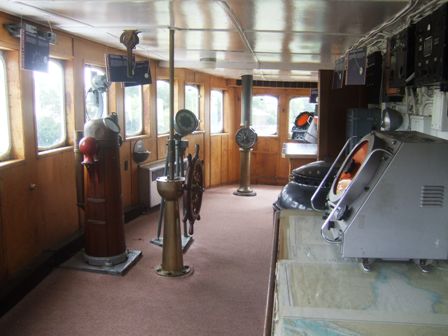 |
The wheelhouse is much more what you would expect on a ship. |
| Above the wheelhouse was an external command post -
but I suspect it got quite cold up here where this ship would have been
operating. | 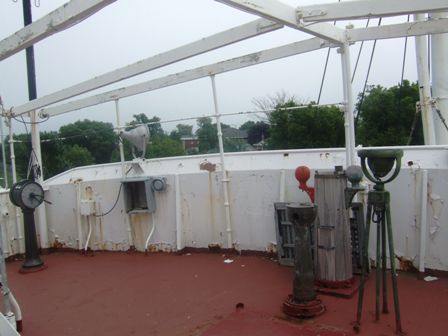 |
 |
The auxiliary steering gear at the rear for use in the event of the main
controls failing. It would have taken four men to turn the wheel from here
despite the gearing. |
| The front winches, which are steam driven. There were
more at the rear. | 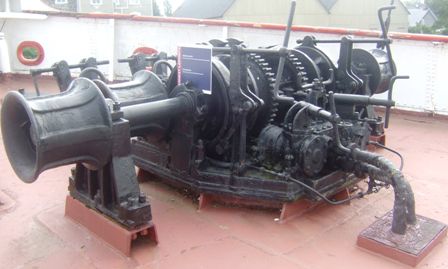 |
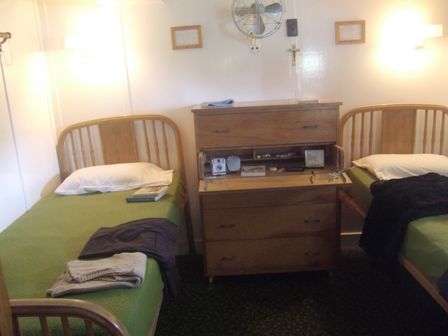 |
The accommodation is better than we expected to find for the period and type
of ship. Admittedly this is one of the guest cabins, but the captain's cabin
is fitted out in even more style. There would have been a crew of about 32
men and 8 passengers on board. |
| It was interesting wandering around the engine room. I
cannot appreciate what it must have been like working down here among all
this big heavy-duty machinery. | 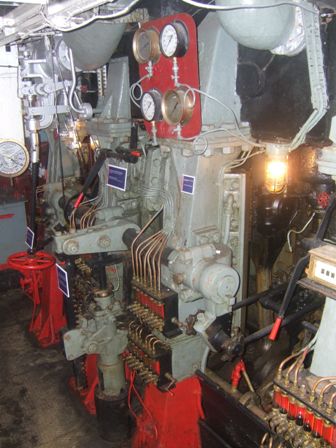 |
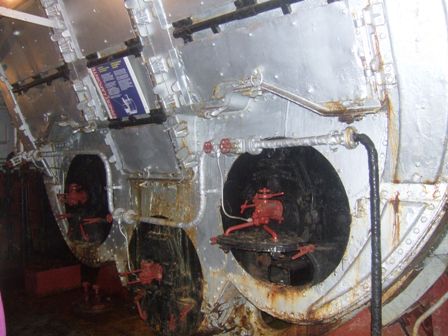 |
It was of course steam powered with six huge oil-fired boilers. This was
half this part of the power plant. |
| Also at the museum is the yacht J E Bernier II. This
was the fourteenth (and smallest) vessel to travel from the Atlantic to the
Pacific via the North West passage. It took three years (including visits to
coastal settlements along the way and over-wintering). There is an
exhibition in the museum and a film of that journey. | 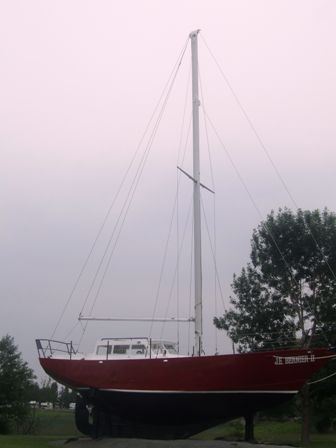 |
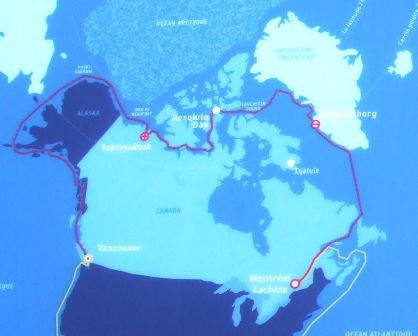 |
Here you can see the route. The top two red circles show where they spent
the winters. Much of the year these waters are still completely covered in
thick ice. |
| They kept records on the voyage using this miniature
typewrite. The colouration is a reflection on the glass of the cabinet. | 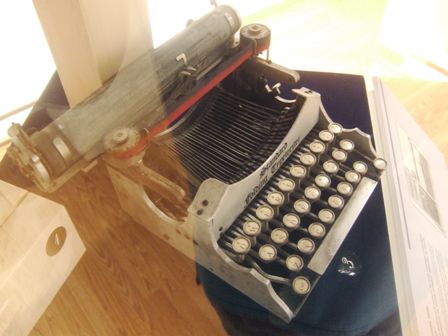 |
|